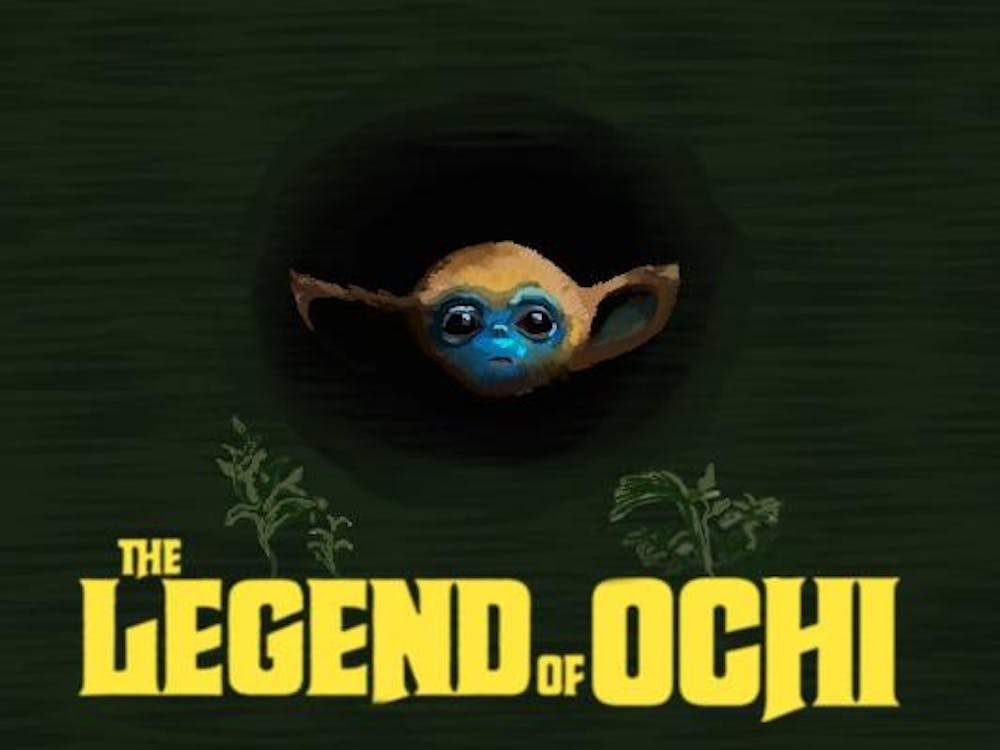In the sudden absence of the Batman and after the death of mob boss Carmine Falcone, a power vacuum emerges that Oswald “the Penguin” Cobb sees as his chance to finally ascend Gotham's criminal hierarchy. HBO’s “The Penguin” is set after Matt Reeves’ “The Batman,” and leads directly into his upcoming film “The Batman: Part II.” Thus, it takes place in Reeves’ Batman continuity — known by fans as the “Reevesverse”. Its final chapter, “A Great or Little Thing,” aired Sunday.
With its character-driven storytelling and endlessly gritty realism, the series proves that comic book adaptations can be as sophisticated and complex as any prestige TV. By diving into the psychology of its characters, the show reveals how Gotham’s systemic injustices create the villains Batman faces, setting up a Gotham in which the heroism of Bruce Wayne and his alter-ego are both necessary.
With executive production from Reeves, showrunner Lauren LeFranc keeps “The Penguin” tethered to what made the inciting film so thrilling, this time with a fresh perspective embedded within the darkest alleys of Gotham’s mafia underbelly. Currently atop IMDB’s list of most popular shows and sitting at 75th on their list of the greatest TV shows of all time, the debut and likely only season of “The Penguin” has been extremely well-received.
The show’s production cost has not been made explicitly clear, but its production quality is emblematic of a full-fledged feature film, mirroring the set pieces and visuals of the two-hundred-million-dollar budget of “The Batman.” Its brooding, atmospheric, and noir-inspired sweeping shots of Gotham, filmed in New York, bring the cursed comic book fictional city to life. Moody lighting and domineering shot composition often shades and aggrandize Oz and Sofia’s frames, making them all the more imposing. Gotham, in all its glory, feels like an antagonistic force itself, building onto Reeves’ already phenomenal world-building.
With the show’s strict adherence to grit and realism, however, the whimsical, imaginative and fun side of the Batman mythos is definitely not represented. For example, the show changes the Penguin’s name from “Oswald Cobblepot” in the comics to “Oz Cobb,” to reinforce that he’s a grimy gangster as opposed to the umbrella-wielding aristocrat. This is a mostly unnecessary snub of the source material made only to reinforce the darker atmosphere of the show.
The “Reevesverse,” so far, has looked to ground itself in reality as much as possible, so “The Penguin” certainly leans into being a crime drama more than a comic story, which may disappoint those looking for an entirely true-to-the-comics show.
The show stars actor Colin Farrell, who plays Oswald “Oz” Cobb, a Batman villain known as “the Penguin” in the source material. Raised by a single mother in Crown Point, Gotham’s poorest neighborhood, Oz grew up in a family shattered by the deaths of his two brothers and absentee father. Marked as an outsider throughout his youth by physical disfigurements, Oz’s origin is steeped in bitter determination to prove to himself, his mother and his city that he’s worth something.
With that chip on his shoulder, and his endless disdain for Gotham’s elite Maroni and Falcone crime families, Oz spends the season cooking up elaborate mob schemes, double crossing allies, and ambitiously weaseling himself into the apex of Gotham's criminal society.
Batman himself, though, is notably missing throughout the series, hidden away and licking his wounds after the climactic showdown with the Riddler in his solo film. The question of Batman’s whereabouts does linger throughout the runtime of “The Penguin”, but is deliberately left unaddressed to avoid spoiling the upcoming film. While “The Batman: Part II” will surely provide answers, production delays and a lack of clarity around the film’s progress have developed an unscratchable itch among audiences to see more of the caped crusader sooner rather than later.
Perhaps the most captivating part of “The Penguin” is the show’s focus on fully fleshing out its extremely well-written characters — particularly Oz, his mentee Vic, and his rival Sofia. These characters’ tragic backstories in the most bleak corners of Gotham seamlessly tie into influencing their actions and arcs throughout the season.
A tiring amount of recent villain adaptations have centered around making a classic evil wrongdoer into an edgy, alright guy. Among modern iterations, there seems to be an incessant need for showmakers to make supervillains less supervillainous and turn them into “anti-heroes” — DC projects like the “Joker” duology and “Black Adam” annoyingly exemplify this. “The Penguin”, however, refreshingly relishes Oz Cobb’s cruelty.
“The Penguin”, however, refreshingly relishes Oz Cobb’s cruelty. From his overcooked New York dialect to manipulative slick-talk, he’s corrupt, conniving and comedic. Oz is willing to go to any length necessary to accomplish his goals, a point that the show drives home repeatedly.
Farrell’s Penguin remains darkly entertaining all over. His sardonic humor amidst the most humorless circumstances is hilarious, helped by Farrell’s pitch-perfect line delivery. “I asked for extra pickles and they gave me two. So a normal amount of pickles is one? Makes no goddamn sense,” remarks Oz while eating a sandwich shortly after disposing of a body. His moments of oddly relatable comedy are dangerous charmers — making audiences complicit in rooting for a criminal who happens to share some everyday frustrations.
Farrell said the Penguin’s look influenced his approach to embodying the character. Born with a disfigured foot that gives him a signature limp — or “waddle” — and facial scars, the Penguin is physically cursed in nearly every representation of his character. .
“It just spoke volumes to me about him as a man, about his toughness but also a certain vulnerability, what it would be like to carry yourself through the world looking like that all pockmarked and scarred up,” Farrell said in an interview with USA Today.
The show masterfully pulls the audience between sympathy and revulsion for Oz, until his brutality at heart resurfaces time and time again, reminding the audience why the Penguin is a villain.
This nuance carries over into the other characters on the show, including Oz’s mentee, Victor “Vic” Aguilar. Oz sees himself in Vic, a new character created for the HBO series, played by actor Rhenzy Feliz. Vic similarly grew up in Crown Point and personally battles a speech impediment. A teenager already wrestling with poverty after his family’s death, Vic descends into a life of crime under the Penguin’s flipper. Oz’s monologues, in which he tries to teach Vic the ropes in violence and drug dealing, offer insight on what drives him to be the Penguin — often, it feels as if he is talking to a younger version of himself.
“I've been where you are … this is one of those moments, you know, where you gotta ask yourself, ‘What kinda life do I want?’ … The world wasn't built for guys like us. That's why we gotta take whatever we decide is ours,” Oz tells Vic at his first ever high-class dinner.
As innocent as he is inexperienced, Vic is by far the show’s most sympathetic character, reluctantly pushing his moral boundaries with each wicked task assigned to him by Oz. Anxiously watching Vic’s season-long arc provides an unprecedented window into Batman’s world. Because the audience sympathizes with Vic’s entire journey into Gotham’s underworld, there is an added layer to the everyday goon we see Batman beat down — Batman cannot punch through generational poverty. Vic’s plunge into crime directly ties into a key theme in “The Batman” — Gotham’s need for Bruce Wayne’s economic assistance, not just physical protection as Batman.
Sofia Falcone, played by Cristin Milioti, emerges as perhaps the show’s most complex character, her elegant yet sinister presence chilling every room she enters. Freshly released after years of torment in Arkham asylum — Gotham’s corrupt mental hospital — she seeks calculated revenge against both Oz and her own family while simultaneously positioning herself to seize the criminal empire her father Carmine left behind.
Episode by episode, viewers will find their loyalties changing between protagonist Oz and antagonist Sofia, becoming unwitting pawns to the mind games of the in-universe characters. Her devastating performance in “Cent’Anni”— her spotlight flashback episode — is itself worthy of an Emmy nomination for Milioti. As Sofia’s flashbacks to Arkham asylum unfold, Milioti conveys her character’s transition from a privileged Falcone daughter into an asylum-scarred survivor with chilling authenticity, making her present-day vengeance feel both tragic and inevitable.
The show’s finale episode, “A Great or Little Thing,” is a haunting love letter to the Penguin’s infamy — a glorious representation of the evil Batman vows to destroy. It fantastically weaves every narrative into an unbreakable knot, while flinging audiences into a whirlwind of awe, anger and ire.
Above all, “The Penguin” is a gripping paragon of villainous storytelling and is an absolute must-see for any Batman fan grown enough to stomach its TV-MA content. Its undeniable quality serves to make the wait for “The Batman: Part II” in 2026 all the more tantalizing.







